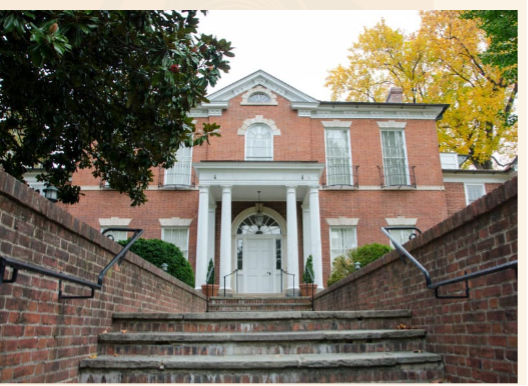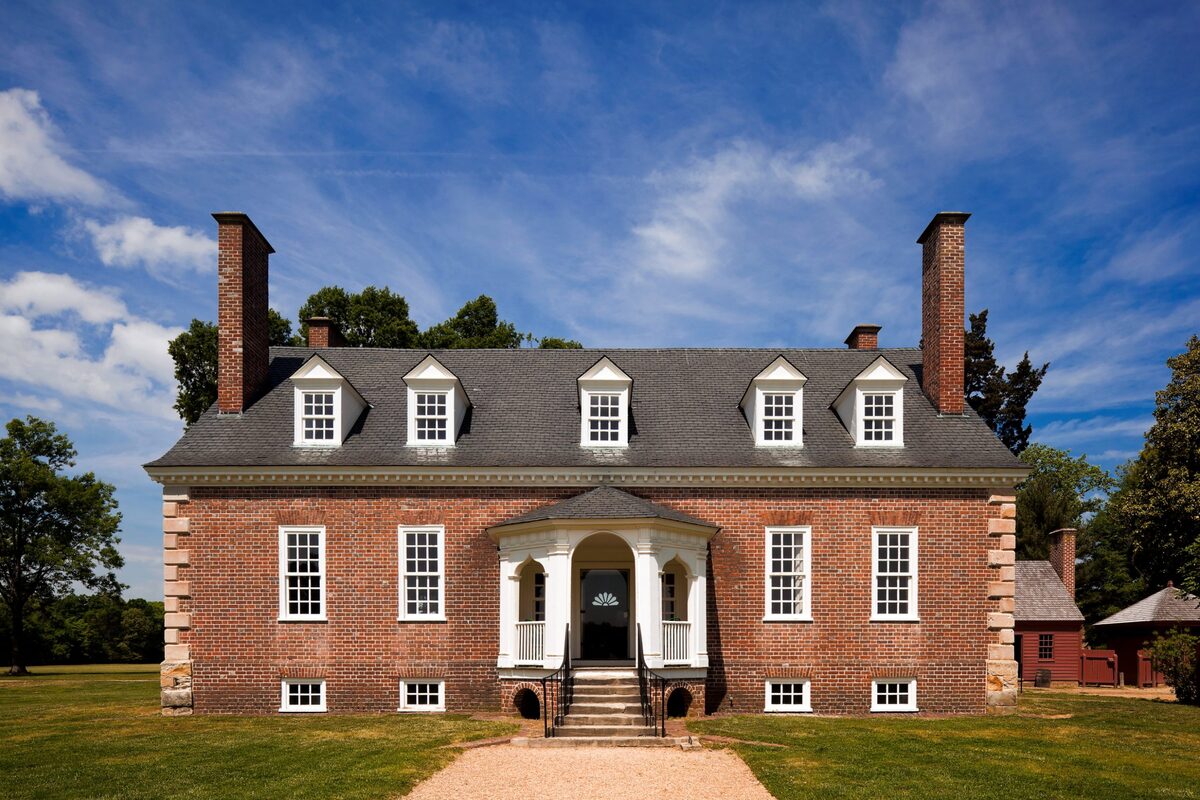National Properties

Dumbarton House
NSCDA National Headquarters and Museum
Before D.C. was D.C., it was a collection of towns that included the riverfront settlement of Georgetown. Now a quiet, tree-lined residential area with a trendy shopping district, Georgetown was once a lively trading port for American exports. It was in this era, a decade after the Revolution gave birth to America, that a great Federal style mansion would be built in Georgetown’s north end. This house would be occupied by a succession of prominent Washingtonians and would go by several names throughout its 200 plus year history. It saw the transition of the city from a quiet agricultural area coming to terms with its federal powers, to a bustling national capital where the world’s fate is decided daily.
Dumbarton House, as it has been known for the last century, was constructed in 1799. It would quickly pass into the hands of the Nourse family, headed by civil servant and British immigrant Joseph Nourse. His 48-year long career as the first Register of the Treasury lasted through six presidential administrations. Joseph, who can be considered America’s first civil servant (and its first suburban commuter), travelled downtown every day from “Jackson’s house on Cedar Hill,” which then included a small farm.
The next owner would be the venerable Charles Carroll, who belonged to a powerful family that included signers of the Declaration of Independence. Carroll was friends with President James Madison and his wife, Dolley. In the run up to the 1814 burning of Washington by the British, Dumbarton, then known as Belle Vue, would serve as a refuge for Dolley as she fled the doomed White House.
Following Carroll’s departure from the home, it was occupied by several other wealthy residents, including a businessman, John L. Newbold, who saved the house from destruction in 1913. Dumbarton House stood in the way of a planned expansion of a bridge linking north Georgetown to the Sheridan Circle area (now home to D.C.’s Embassy Row). Newbold managed to get a court order holding off the construction and ambitiously commissioned the physical relocation of the building. Moving the house roughly 60 feet downhill took 200 jacks and three weeks, along with the demolition and reconstruction of the house’s wings.
The new location paved the way for the most recent and enduring chapter in the home’s life, which began in 1928 when The National Society of The Colonial Dames of America bought the property, named it Dumbarton House, and put it to use as their national headquarters. The Dames set about restoring the house to its Federal origins, which meant removing Victorian interventions and restoring original elements. The home, which the NSCDA opened as a museum in 1932, was filled with early American furniture and decoration, to bring it closer to the way it would have looked in the Nourse era. Today, a visit to Dumbarton House is an exploration into the Nourse household—the family, as well as the free and enslaved workers—and a look back at what Washington, D.C. was like in its earliest years as the nation’s capital.
Location
2715 Q Street NW., Washington DC 20007-3071
Hours
Open to the Public for Self-Guided Tours:
Saturday and Sunday, 10am to 3pm
Weekdays by appointment only
Admission: $10
Contact
Phone: 202-337-2288
Email: info@DumbartonHouse.org
For more information, visit Dumbarton House's website

Gunston Hall, 1755 - 1759
Gunston Hall, built ca. 1755-59, was the plantation home of George Mason, founding father and principal author of the Virginia Declaration of Rights. His call for freedom of the press, tolerance of religion, and other individual rights inspired many seminal freedom documents worldwide, including the Declaration of Independence, the U.S. Bill of Rights, and the United Nations Universal Declaration of Human Rights.
The Georgian-style mansion features some of the finest 18th-century ornamental architecture in the country, with exquisite interiors largely designed by Mason’s indentured London carpenter William Buckland and intricately hand carved by William Bernard Sears.
Location
10709 Gunston Road
Lorton, VA 22079
Hours
Open: Mansion and Museum Daily 9:30am - 5:00pm with guided tours every 1/2 hour until 4:30pm; Grounds close at 6:00pm
Closed: Thanksgiving, Christmas, New Year's Day
Contact
Phone: (703) 550-9220
Fax: (703) 550-9480
.png)
Sulgrave Manor, 1539
Sulgrave Manor, the ancestral home of George Washington, was built by Lawrence Washington in 1539 and is located northeast of Banbury in the village of Sulgrave. The great-great grandson of Lawrence, Colonel John Washington, left England during the rule of Oliver Cromwell as Lord Protector in 1656 to seek a new life in Virginia. In 1914 the Manor was presented by British subscribers to the peoples of Great Britain and the United States of America to celecrate one hundered years of peace between the two countries. Sulgrave Manor represents a superb example of a small manor house and garden of the Tudor period in England. An Endowment Fund, begun in 1924 by the National Society of The Colonial Dames of America, assists in the maintenance of the property. The Friends of Sulgrave Manor, a U.S. 501(c)3 charity raises funds in the U.S. to support Sulgrave Manor.
Location
Sulgrave, Near Banbury
Oxfordshire, United Kingdom OX17 25D

